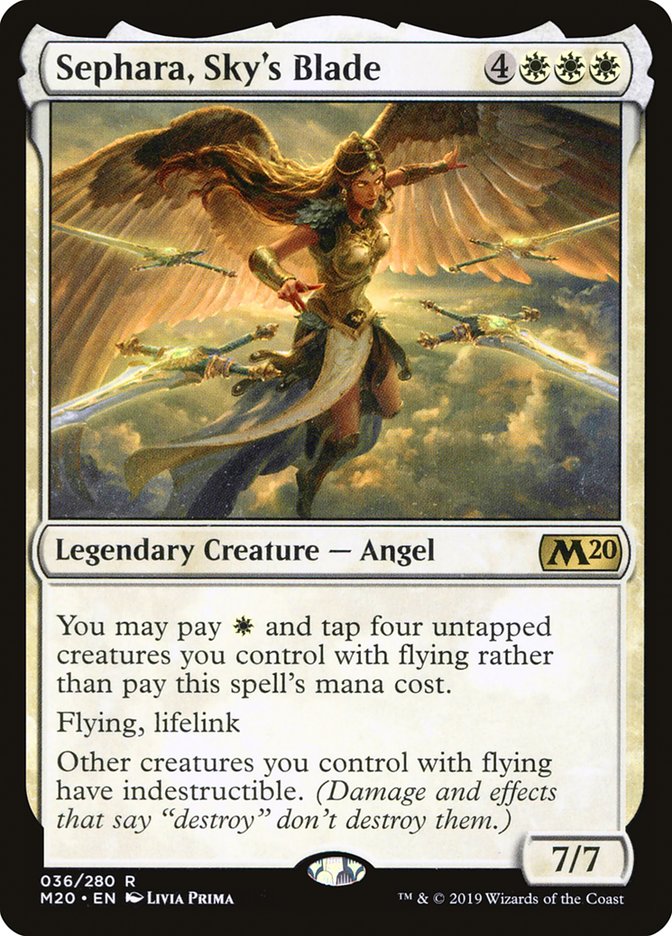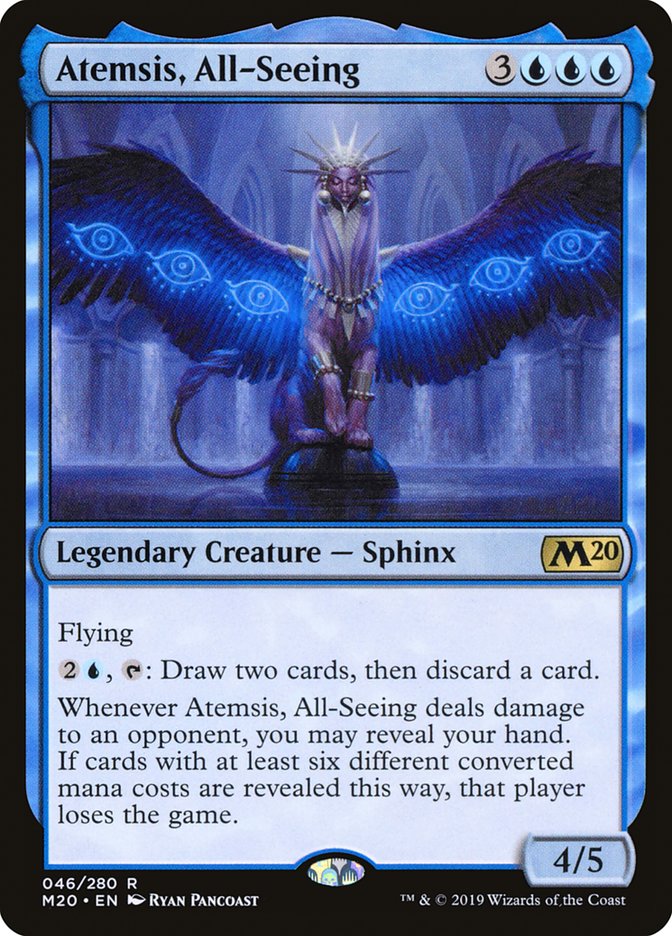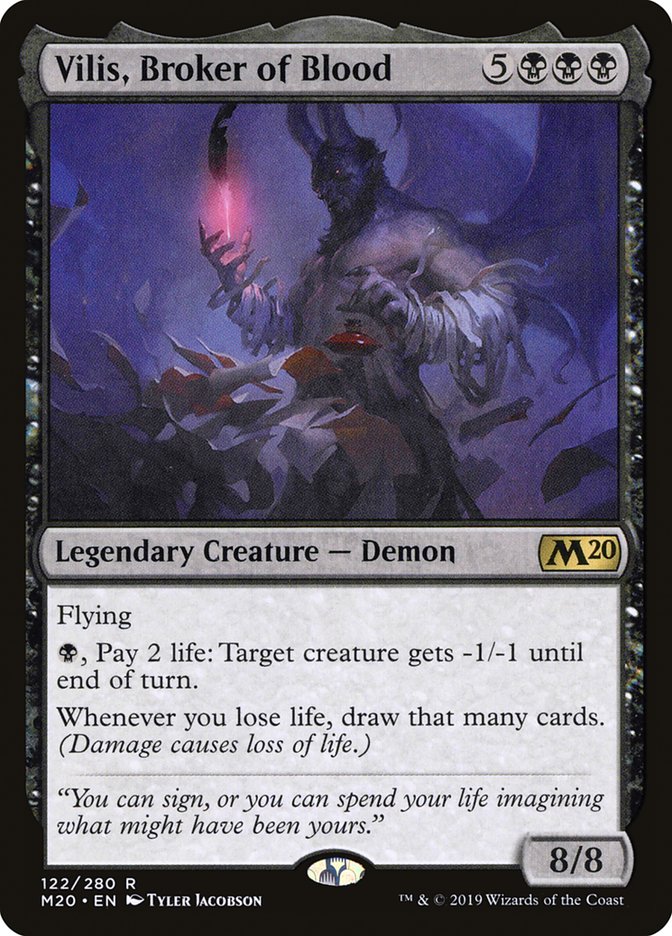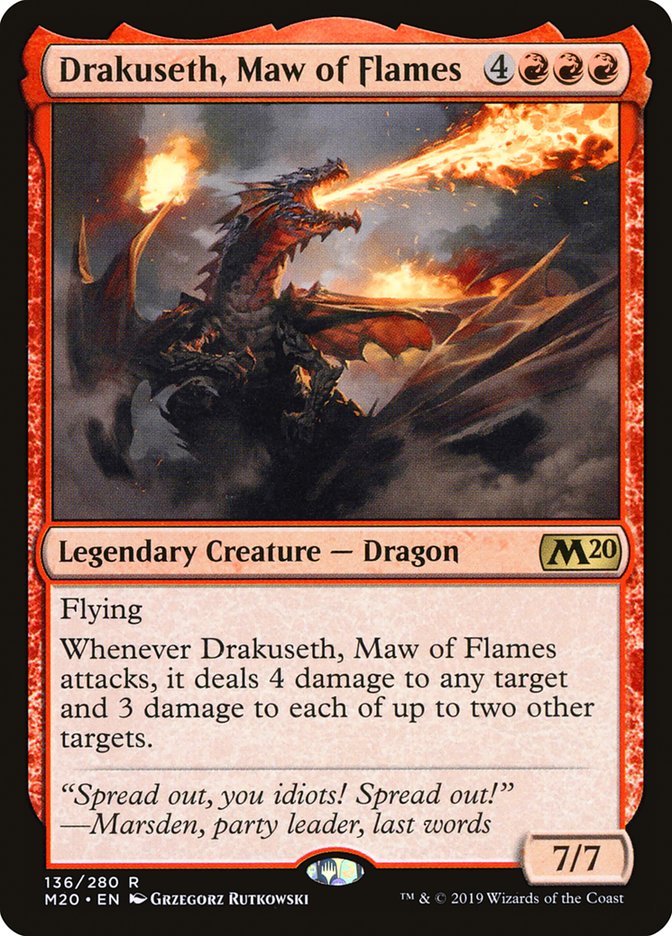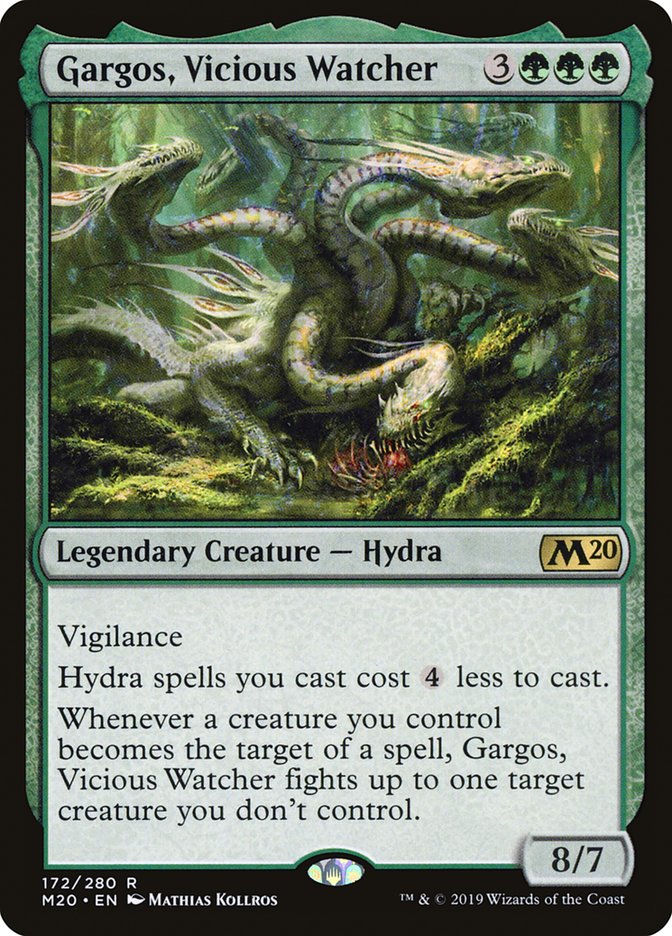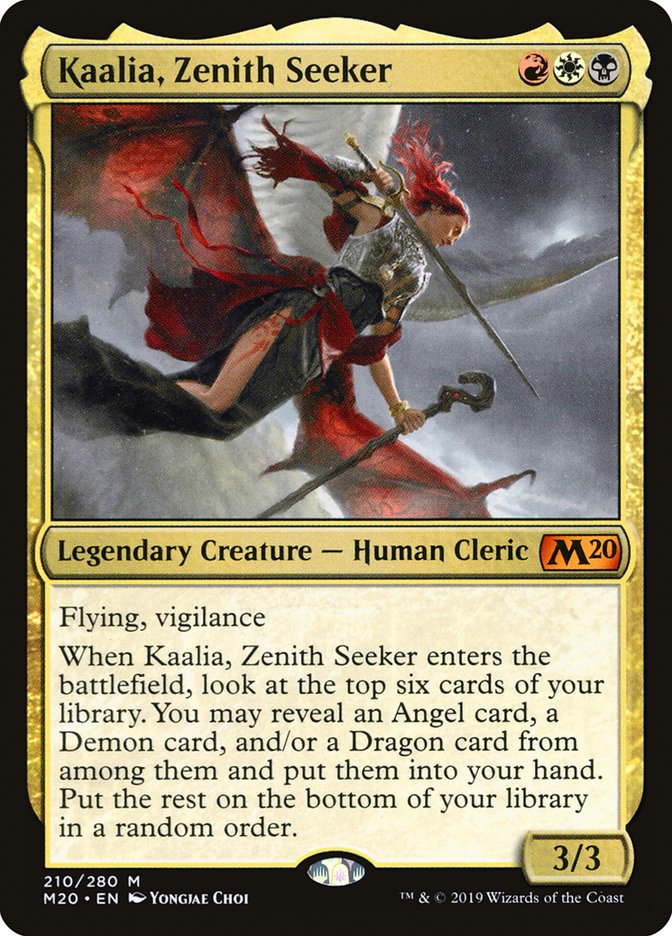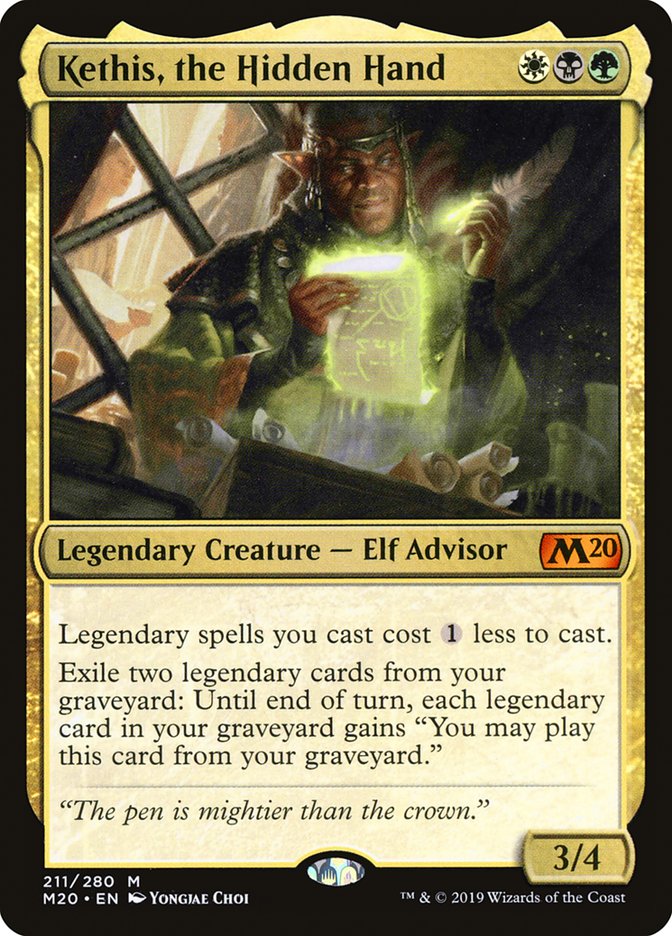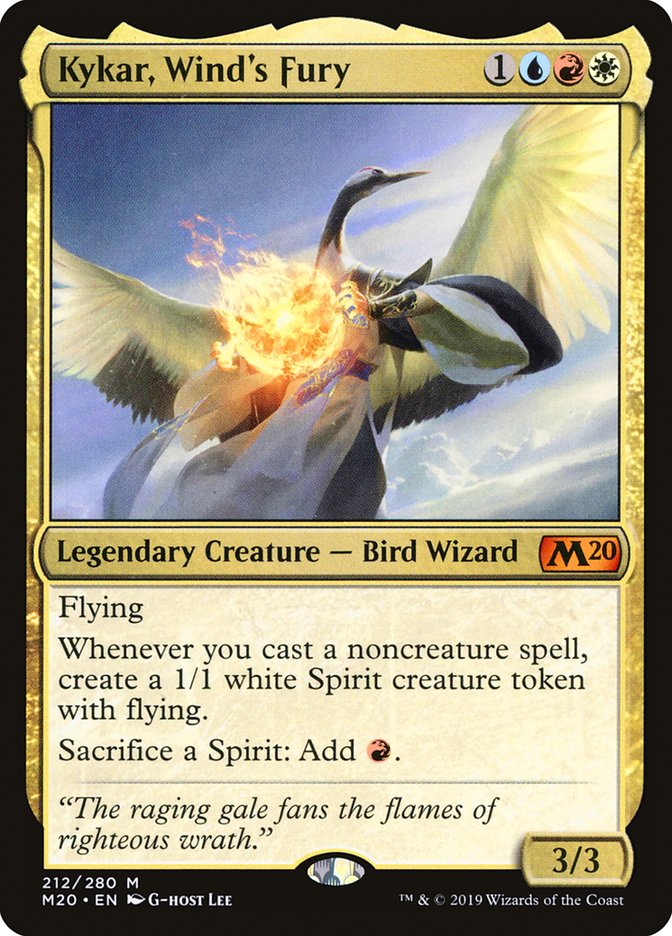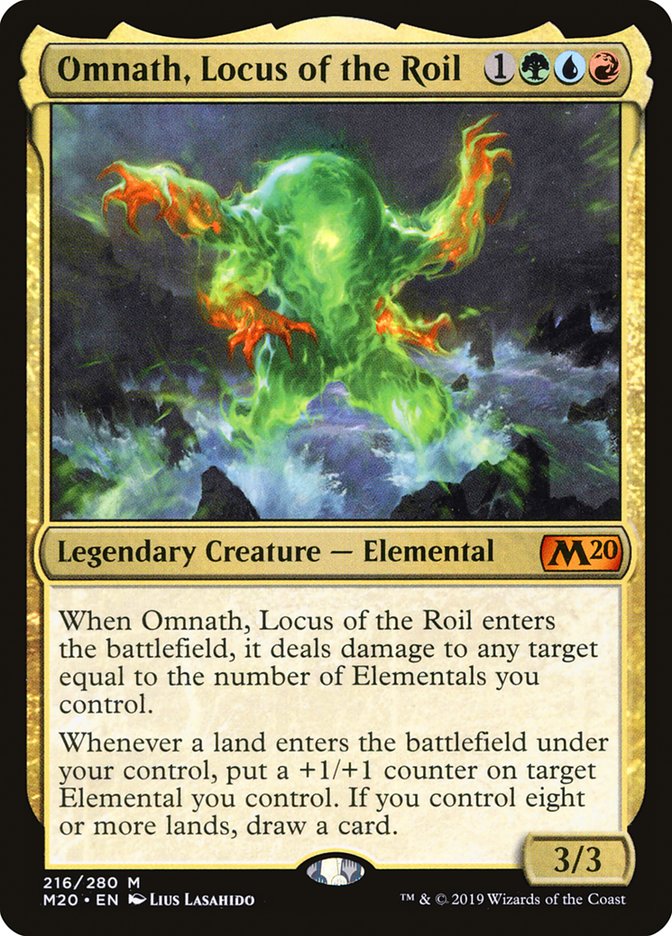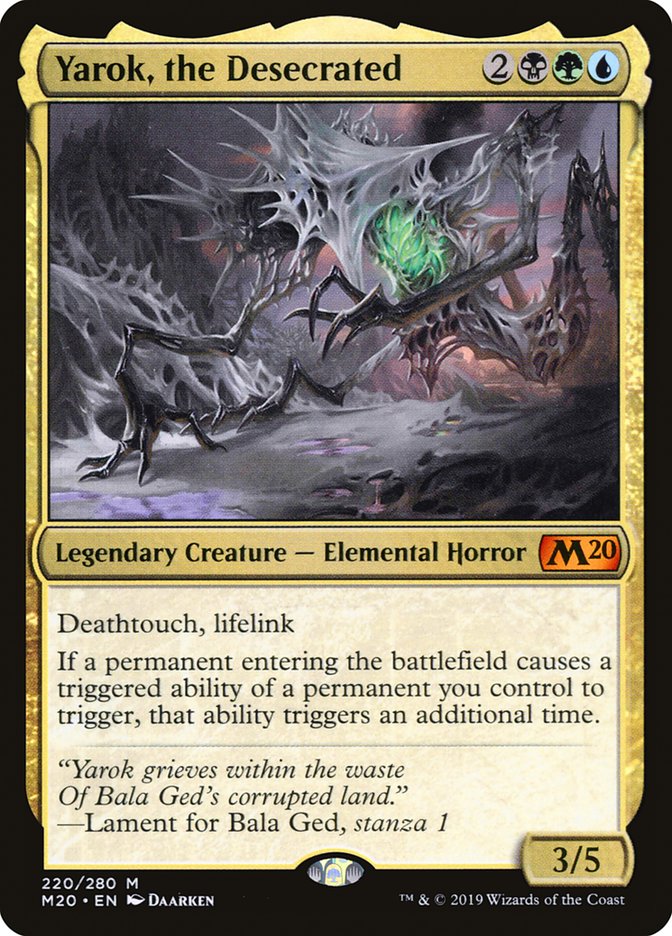Core Set 2020 is another in a string of products that are simply wonderful for Commander. Under normal circumstances, I’d do a straight-up review of the set, but there are so many good cards that it would get too long. What I’m going to do for this one is break the review into two parts: one for the commanders, which we’ll do first, and then for the rest of the cards.
As always, this is a review of the cards for Commander only. The cards’ impact might instantiate quite differently in other formats. For the commanders, I won’t need to grade them as I normally do in set reviews; they’re all quite playable and get an easy A.
There are eleven legendary creatures in Core Set 2020: one in each color and then six multicolored ones. My primary focus will be on what the card can do as a deck’s commander. The monocolored ones will also have more applications as 1 of 99 than the multicolored ones might.
White
You’ll want to build a deck around which you can drop Sephara onto the battlefield by about Turn 4, which shouldn’t be that difficult. The two ways to do it are either curve into it with creatures or to play spells that put creature tokens onto the battlefield in one fashion or the other.
The key is to get a fourth creature onto the battlefield on Turn 4 and still have {W} available in order to cast Sephara. Everyone’s choice for the one-drop is Serra Ascendant, a card which would be quite different had it been printed in a time when our friends in R&D were sensitive to Commander when designing cards. Instead of 30 life, it would have likely said some variant on “ten more life than your starting total.”
There aren’t that many other one-mana white creatures to add to Sephara. Maybe Doomed Traveler, since you still have a creature if it gets killed; Songstitcher for is protection qualities; or Topplegeist for its defensive capabilities. There are way too many two-, three-, and four-drops to talk about individually, and which ones you include will mostly be left to taste or theme. Precinct Captain, Hero of Bladehold, and cards like them are good because they bring friends without having to spend mana.
It seems like the better way is to have some spells which put creatures onto the battlefield, because you can get some multiples with a single spell. Gather the Townsfolk will give you two creatures for two mana, as will one of Core Set 2020‘s reprints, Raise the Alarm. Oath of Gideon will give you creatures and set you up for using Elspeth, Knight-Errant, or Elspeth, Sun’s Champion a little later in order to make more tokens. You could also use cards that create Eldrazi Spawn or Scion tokens, although those tend to be a little more expensive. Still, Blight Herder gives you three of them.
The thing to remember about Sephara’s alternate cost is that it only pays the spell’s mana cost; you’ll still be responsible for paying additional costs, like the commander tax. Still, casting a 7/7, flying, lifelink creature for 2{W} or even 4{W} is just fine by me.
Blue
One of my early picks for a card that’s going to make a splash in the format, Atemsis will lead to some alternate win condition games. In mono-blue, you’re going to be able to draw piles and piles of cards, meaning your hand will be full enough to meet the condition of having six with different mana costs. On the extreme end, there’s Enter the Infinite, but with a Reliquary Tower and some draw spells, in creature form like Arcanis the Omnipotent or the classic way with Mystic Confluence or Jace’s Ingenuity, you won’t need to be full-throttle. If you’d like to go Sphinx Tribal, you certainly can, as one of my local players demonstrated last week. Sphinx of Uthuun or Unesh, Criosphinx Sovereign, to name just a few, will be sure to fill your hand up with goodies.
The big thing about Atemsis is that its trigger is on any damage, not combat damage. A card like Surestrike Trident will mean you don’t have to risk getting Atemsis killed in combat. Of course, you can go the Red Zone route by making Atemsis unblockable—Rogue’s Passage is good and Sun Quan, Lord of Wu will get you around most armies. Also don’t ignore tricks like returning cards to your hand in order to fulfill the requirement. You’d definitely get the cool play award from me if you put Atemsis’s trigger on the stack and then cast Evacuation in order to get you to the six different CMCs. Atemsis’s own card draw ability is geared toward sculpting your hand, and you can use a card like Cloudstone Curio to further ensure you have the right mix. All in all, Atemsis is something very different, which makes it compelling.
Black
The main anxiety with Vilis is how you’re going to keep yourself from dying unexpectedly. Dead with a hand full of cards is still dead. I’m a fan because it’s a return to old-school Demons, the kind which are powerful but can really hurt you in the bargain. Don’t get me wrong, I’m a fan of Reaper from the Abyss and the newer Demons; they just feel like a flavor fail.
The first card which comes to mind for a Vilis deck is Blood Artist. Activating Vilis’s ability means you’ll be killing small creatures. Blood Artist gives you back some of the life you’ve lost, giving you the opportunity to do it again. That leads down a whole “whenever a creature dies” line, whether that’s things which trigger on any creature, creatures you control, or creatures opponents control. The big hitter here will be Black Market, which will then enable you to have piles of mana to keep activating Vilis over and over (and it may have helped you cast it in the first place), perhaps leading to an eventual Exsanguinate win condition.
Dross Harvester is a hidden gem that I keep singing the praises of. You’ll definitely gain more than you’ll lose, but now Dross Harvester’s end of turn trigger gets you four cards. Sangromancer is another card that doesn’t see nearly as much play as I think it should, and it’ll keep your Vilis engines running. If you want to get really techy in the creature-dying deck, use Revel in Riches to create a pile of Treasure tokens and take that alternate win. If you want a more traditional avenue through combat damage, Patron of the Vein in a Vilis Vampire tribal deck, or just huge Yahenni, Undying Partisan would be the way to go. Super-super-tech here would be to use Cauldron of Souls to give all the small creatures persist, perhaps even killing them automatically when they come back onto the battlefield. If you want to live more precariously, you can just drain yourself down to a tiny life total and then cast Repay in Kind, which you’ve likely drawn into with all those cards.
Red
There isn’t too much that suggests Drakuseth as a build-around commander. There’s still plenty to like about it, even if you want to try to shoehorn it into leading a build. It deals damage to three targets, meaning if you’re playing something that attacks, it can get rid of up to three medium-sized creatures. You can double up on that with Furnace of Rath/Dictate of the Twin Gods, or the slightly safer Angrath’s Marauders. Maybe you’re looking for a non-Goblin to command that Goblin deck. Or just something that likes to turn creatures sideways. Repercussions is an obvious choice, since you can deal out equal amounts to the players which control the creatures. The card goes to show that you can have a commander that’s useful regardless of what kind of deck you build around it.
Drakuseth feels more to me like a card in a Dragon tribal deck than the leader of one, since you’ll want other colors as well, such as black and green to have Karrthus, Tyrant of Jund be the commander. Karrthus will give it haste so that it can attack right away and start dealing out damage. Alternately, you can toss it into your Dinosaur deck which features enrage, although you’ll want those with a higher toughness, such as Polyraptor or Ripjaw Raptor.
Green
Hydra tribal is built right into the card, but that doesn’t mean you necessarily have to go that way. It’s certainly the most tempting, because Hydras can be loads of fun, and having them be bigger for the same amount of mana is even more fun. Outside of the Hydra box, I’d look to make Gargos even larger and start killing people with commander damage. The best way to do this while taking advantage of Gargos’s ability is with Vigor. Every creature you fight makes your commander that much larger. It doesn’t natively have trample, so you’ll need a way to get it—but you’re in green. You won’t have too much trouble. From Crowned Ceratok to Brawn to Nylea, God of the Hunt, you have options.
Gargos triggers only when a spell targets one of your creatures, so you can’t run the Cauldron of Souls trick. You can use Blessings of Nature to put a counter on four creatures to get four triggers. You’ll spend a fair amount of mana, but you have Solidarity of Heroes. If you want a card that no one has ever seen before and doesn’t really do anything else significant unless you have Gargos on the battlefield, go with Sylvan Paradise. You can put Aggressive Urge or Giant Growth onto Isochron Scepter for repeatable creature kill. And don’t forget Basilisk Collar, so you can also gain some life while you’re doing it.
Multicolor
This version of Kaalia is far less likely to get you orc-piled as soon as you reveal commanders for the game. You can build the same kind of Angel, Demon, and/or Dragon deck without worrying that it’s oppressive. Your chances of always hitting at least one card are pretty good; two or three isn’t out of the question. I can’t recall seeing too many Kaalia of the Vast commander damage kills, and although I wouldn’t also expect too many with this one, she’s a little more combat-ready than her predecessor.
Kaalia, Zenith Seeker looks way stronger as one of 99 in a Kaalia of the Vast deck. You cast her a turn after the commander and before combat, and you have the card you want in your hand. As if Kaalia decks needed any more help.
I’m split on this card. On one hand, I like the idea of spending less to cast legendary spells. On the other, I’m not a fan of exiling stuff from my own graveyard. I suppose two brave souls could sacrifice themselves for the greater good, but that plan seems like it’s nothing more than diminishing returns. Kethis suggest building a deck of mostly legendary permanents, and there are certainly some good ones in the Abzan colors. You could then use Thran Temporal Gateway to put them onto the battlefield on the cheap, get zippy with Blackblade Reforged with a side of Hero’s Blade, and do something absurd with Helm of the Host. We can’t forget that planeswalkers are also legendary spells. Casting them and The Chain Veil for less is bound to lead somewhere saucy. Since I’ve never built a Superfriends deck, that would probably be the path I’d choose for Kethis—although I’ll confess that I would have a difficult time not running Karador, Ghost Chieftain as one of the 99.
Kethis in the deck is reasonable, since at the very least it’s going to make your commander less expensive. Maybe there’s room for it in one of your Karador builds so long as you’re also playing and recurring Riftsweeper.
My first thought about Kykar is that it’s a better Talrand, the Sky Summoner. You’re in more colors, so you have more spell choices. It triggers not just on instants and sorceries, but planeswalkers, enchantments, and artifacts. Perhaps most importantly, it helps provide some mana. You have loads of choices in the colors for Spirit tribal (266, not counting Changelings). If you’re casting spells anyway, Balefire Liege happens to be a Spirit Horror. Brago, King Eternal, normally found at the helm of decks, is also a Spirit. Drogskol Captain is another significant one in the colors, since it makes your Spirits larger and gives them hexproof; sadly, Kykar itself isn’t a Spirit, although you can give it some protection with Kira, Great Glass-Spinner. One of the most popular cards in Commander history, Karmic Guide, is a Spirit. Field of Souls is certainly an inclusion. This might not be the first of the of the Core Set 2020 legendary creatures that I build a deck with, but it’s pretty high up the list. It just looks like some fun.
This will likely be the first deck I build with the new set. Why? Because I’m a Temur junkie and I know it. Clearly Elemental tribal will be a thing, and the first card to include is Risen Reef, also from the new set, kind of Coiling Oracle on steroids. Plus, finally a use for that foil Primal Beyond I got instead of a good Morningtide rare.
There are certainly a number of ways to go, clearly creature-based. Crackleburr seems kind of interesting. We have Fertilid for some nice ramp, and maybe add a little proliferate along with it. Maelstrom Wanderer is an Elemental, and plus-plus value for any deck. The danger here (or is it the reward?) is just looking through the list of the creature type and picking stuff that’s cool instead of putting together something coherent. There seem like enough “lands matter” Elementals to head that direction, starting with Living Tsumani and moving into Avenger of Zendikar; Omnath, Locus of Rage; Roil Elemental; and Undergrowth Champion. Azusa, Lost but Seeking and a thing or two to get extra land drops, and we’re in business.
So. Many. Triggers. Panharmonicon on a stick lets me play all my favorite creatures of all time and get bigger bonuses for them. Solemn Simulacrum. Bone Shredder. Mulldrifter. Wood Elves. Puppeteer Clique. Duplicant. The list goes on and on and on and on. Which is, of course, why I have to resist the urge. It’s just more of the same from my Muldrotha deck, and I have to broaden my horizons. For now, I’m just stuffing Yarok in there. Then I’ll see down the road where we get to. Landfall. Gonti, Lord of Luxury. Wild Pair. The criminally underplayed Death Match (although that goes both ways, so it seems like Asceticism would be in order). Yarok is a card we’re rightly going to see a great deal of. The question will be if we can build stuff that’s more interesting than the same old good stuff deck that the card is pulling us toward.
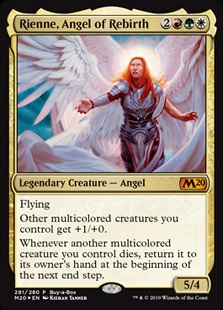
Clearly the play is to get this altered to be Rienne of Tarth. She’s an Angel, so you could certainly start with multicolored, mostly Boros, with green as a small support color for Sigarda, Host of Herons, and of course some ramp spells. Most of the battle creatures would be Angels like Gisela, Blade of Goldnight; Firemane Avenger; Anya, Merciless Angel; Aurelia, Exemplar of Justice; and Aurelia, the Warleader. Some multicolored non-Angels you play here involve cool abilities that you sacrifice them to, so they’ll come back to your hand include Saffi Eriksdotter, Dauntless Escort, Loxodon Hierarch, and Qasali Pridemage. Cards with echo, like Karmic Guide, Avalanche Riders, and Deranged Hermit, will come back, so you can get having to sacrifice them. You could build one of the first Naya “graveyard matters” decks. Rienne is also no slouch when it comes to combat, so some commander damage kills might be possible, running cards like Rubblehulk to smash through some out-of-nowhere damage.
In Part 2, we’ll cover the rest of the cards in the set, which are no less exciting for Commander players than the legendary creatures are.
Sheldon Menery’s Deck Database
Check out our comprehensive Deck List Database! Click each section for lists of all my decks.
Signature Decks
These are the decks that define my personal play style to the greatest degree and to some extent lay the original foundation of the format. They’re also the ones you’re most likely to see me bringing along to spell-sling at an event.
The Chromatic Project
The Chromatic Project started as an effort to build at least one deck of all 27 possible color combinations, which was expanded to 32 when we finally got four color commanders. There’s more than one of some combinations, mostly because I have a Temur problem, plus some partner combinations are too enticing to pass up.
Mono-Color
Guilds
Shards and Wedges
Four Color
Five-Color
Partners
The Do-Over Project
The Do-Over Project is the next step after the Chromatic—building a deck with each of the same Commanders, but not repeating any cards save for basic lands (props to Abe Sargent’s “Next 99” idea). The Do-Over Project is still ongoing because we keep getting saucy new sets with creative and colorful commanders to build new decks with.
If you’d like to follow the adventures of my Monday Night RPG group (in a campaign that’s been alive since 1987) which is just beginning the saga The Lost Cities of Nevinor, ask for an invitation to the Facebook group “Sheldon Menery’s Monday Night Gamers.”


